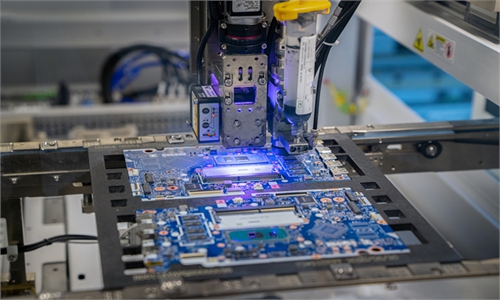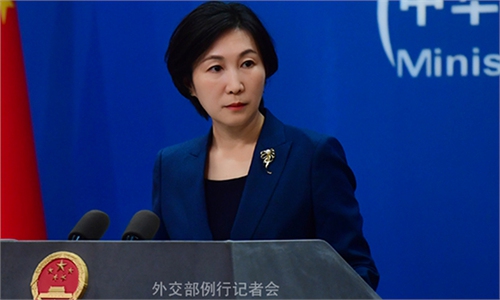
Photo: VCG
China will restructure its Science and Technology Ministry to better allocate resources to overcome challenges in cutting-edge technologies, with the goal of moving faster toward greater self-reliance in science and technology, according to a State Council plan on reforming its institutions submitted on Tuesday to the first session of the 14th National People's Congress for deliberation.The overhaul, the second restructuring of the ministry in five years, may mark a start of the deepening reforms of China's technological innovation system, at a time when Chinese industries, especially the semiconductor sector, face heightened US technological containment.
If anything, the scope of the restructuring reflects China's determination and top-level emphasis on improving the science and technology innovation system and achieving a high-level of technological self-reliance. This arrangement was made against the backdrop of increased US technology sanctions and containment against China. Specifically, the existing responsibilities and several subdivisions will be re-distributed to the Ministry of Agriculture and Rural Affairs, the Ministry of Ecology and Environment, the National Health Commission, and the Ministry of Industry and Information Technology.
Most importantly, the restructured Science and Technology Ministry, which will no longer be engaged in the review and management of specific scientific research programs, will play a bigger role in science and technology-related strategic planning, institutional reforms, allocation of resources, comprehensive coordination, formulating policies and regulations, and supervision and inspection.
With the US' continuing "decoupling" push in the high-tech areas aimed at containing China's development, the importance and urgency of China's self-reliance in science and technology goes without saying. In the past, China has been used to introducing a variety of industrial strategic planning to guide the development of specific industries, which are mainly involved playing catch-up with global rivals in the technology areas. While it may have precipitated rapid development in terms of industrial capacity and scale, there have been some examples of repeated and inefficient high-tech investments as well as overcapacity in recent years.
Increasingly, the lack of top-level design and coordination of technological innovation system is hindering China's efforts to break the stranglehold in high-tech development, making it difficult to realize an "overtake on the bend" in technology. Therefore, the restructuring this time is expected to address the problem so that China can better coordinate its scientific and technological forces to overcome difficulties in key and core technologies, such as basic research and original innovation, in the hope of cultivating a driving force for economic and social development amid the severe challenges posed by increasingly fierce international technological competition and external containment pressure.
Now that changes in the international geopolitical landscape have brought about changes in the requirements for scientific and technological innovation system, the traditional model where companies rely on the introduction and absorption of advanced technologies to achieve technological breakthroughs and economic development no longer suits China's needs in the high-quality development stage, and becomes increasingly unsustainable amid the US tech curbs.
Therefore, the importance of original innovation and basic research has been put forward and attracted lots of attention. However, original innovation is the most difficult part in the pursuit of technological progress, requiring companies to invest heavily in basic research, applied basic research and cutting technologies, a common practice in the world's leading technological powers.
From the perspective of China's case, there is still room for input in basic research, given that companies' basic research expenditure accounts for a small part of the national basic research expenditure, with the proportion only at 6.52 percent in 2020, according to a study. Moreover, China's spending on basic research during the 14th Five-Year Plan period (2021-25) will likely reach a record 8 percent of all research and development expenditure, according to the Ministry of Science and Technology.
Overall, the improvement of China's technological innovation capability will not happen in the short term, which requires taking full advantage of the Chinese government's strong executive capacity to focus on the breakthrough,and long-term coordinated efforts of the government and market forces in the right direction. In this sense, the restructuring of the tech ministry is the first rallying cry of a long, hard battle.



